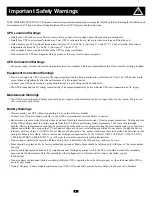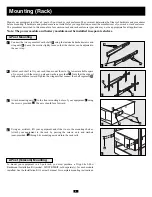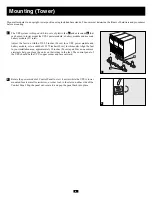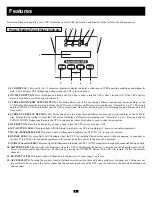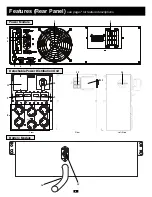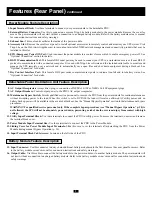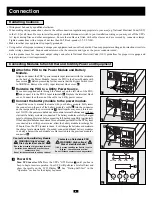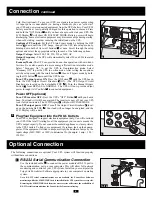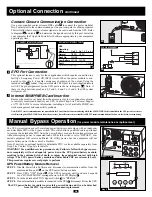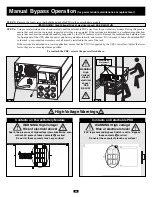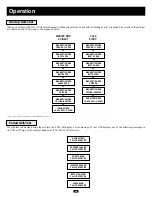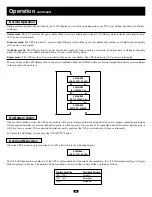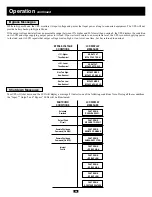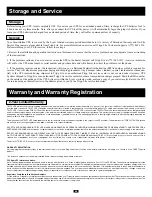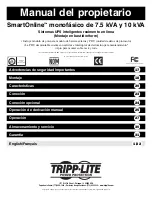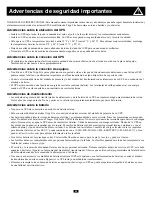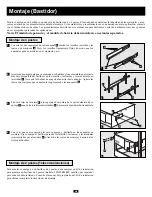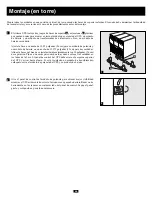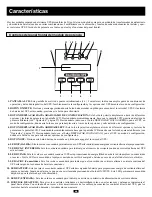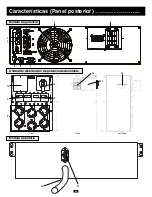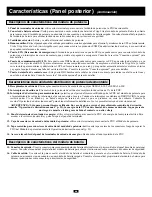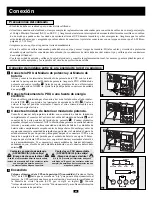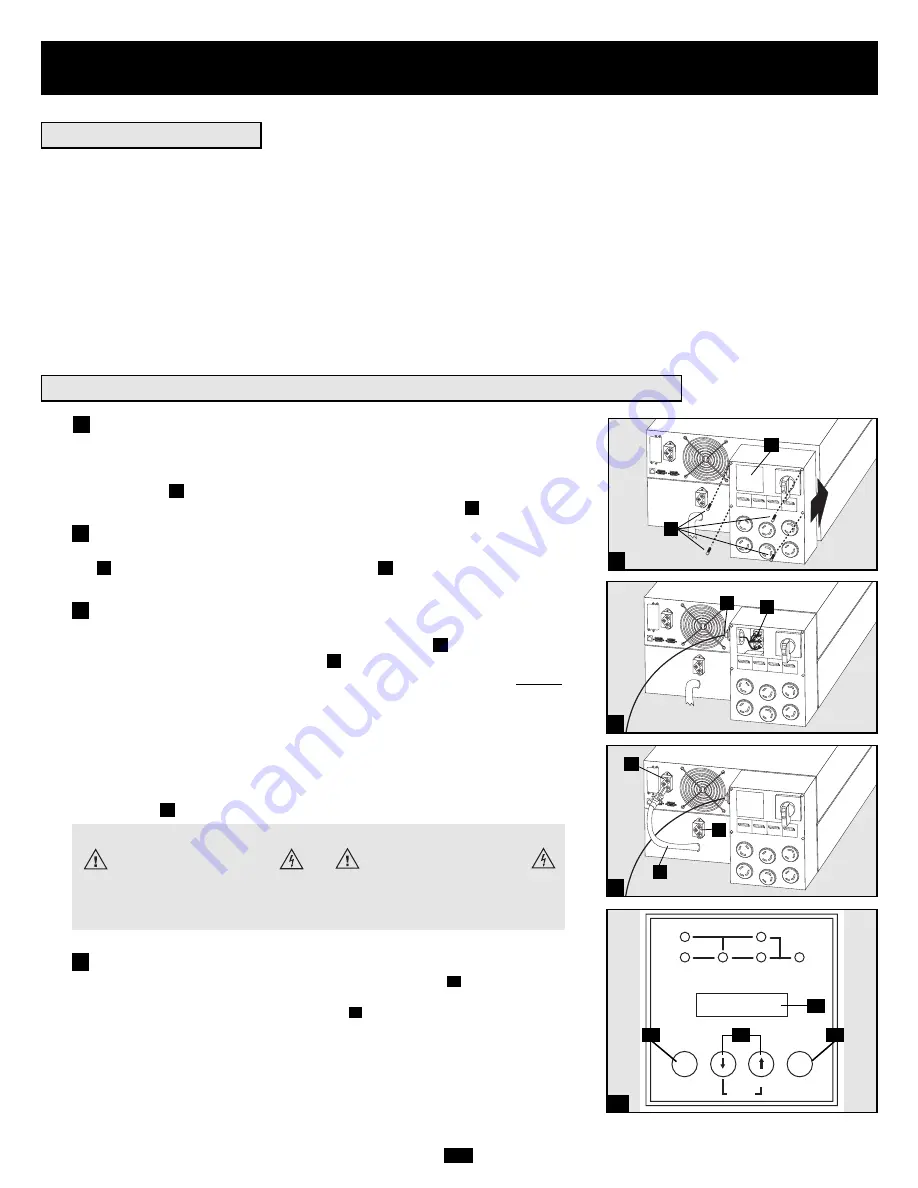
8
Attach the PDU to the Power Module and Battery
Module.
Align and connect the PDU's power module input terminals with the terminals
on the back of the Power Module. Secure the PDU to the Power Module with
four screws
. Before proceeding further, ensure that the Bypass Switch is set
to NORMAL. Remove the utility input terminal block cover
.
Hardwire the PDU to a Utility Power Source.
Pass a user-supplied cable through the knockout on the left side of the PDU
and connect it to the PDU's input terminals
. Replace the terminal block
cover. Connect the other end of the cable to a utility power source.
Connect the battery module to the power module.
Consult the owner’s manual that came with your battery module. Fully insert
the connector on the end of the battery module’s cable
into the connector
on the rear panel of the power module
. Small sparks may occur; this is nor-
mal. NOTE: the power module does not contain internal batteries and will not
start until a battery module is connected. The battery modules are fully charged
prior to shipping. However, before expecting full backup capability (particularly
if the battery module has been stored for an extended period) after the UPS system
is connected to a utility power source, allow the battery module to recharge for
12 hours. Once the UPS system is in use, it will charge the batteries and maintain
the charge level automatically. If needed, connect additional battery modules
in a daisy-chain with each module’s cable inserted into the previous module’s
connector
.
G
F
E
D
C
B
A
1
2
2
Connection
• Wiring must be done by a qualified electrician.
• When making wiring connections, observe the cable connection regulations appropriate to your area [e.g. National Electrical Code (NEC)
in the U.S.] at all times. Be sure to install an easily accessible disconnect switch in your installation wiring so you may cut off the UPS’s
AC input during fires and other emergencies. Ensure that cables are fitted with cable sleeves and are secured by connector clamps.
Tighten connections with a torque of not less than 24-28 inch-pounds (2.7-3.2 NM).
• Make sure that your equipment is properly grounded.
• Using cables of improper size may damage your equipment and cause fire hazards. Choose appropriate cabling and protection circuits to
make wiring connections. Ground conductors must be the same size and type as the power conductors used.
• See the product case for input and output ratings and refer to National Electrical Code (NEC) guidelines for proper wire gauge and
output protection circuit requirements.
Connecting Modules to Each Other and to Utility Power and Equipment
Hardwiring Cautions
3
A
1
D
3
B
C
E
F
G
Contacts on Power/Battery Module
WARNING! High Voltage!
Risk of electrical shock!
Due to the presence of high voltage internal
batteries, even without AC present, these
contacts are live!
Do not let these contacts touch any surface!
Contacts on Detachable PDU
WARNING! High voltage!
Risk of electrical shock!
If AC is present and Bypass Switch is set to
"Bypass", these contacts are live!
Do not let these contacts touch any surface!
I/P
BYPASS
BATTERY
AC/DC
DC/AC
O/P
OFF
ON
MUTE
SELECT
SETUP
I
H
K
J
4a
Power ON
Turn UPS inverter ON:
Press the UPS's “ON” Button
until you hear a
beep to begin inverter operation. Your UPS will perform a brief self-test and
show the results on the LCD Display
. See “Startup Self-Test” in the
“Operation” section for the display sequence.
H
I
4
Содержание Smart On SUINT3000XL
Страница 47: ...47...
Страница 70: ...20 1 800 SAV LEAD 1 800 728 5323 1 800 8 BATTERY 1 800 8 228 8379 www rbrc com...
Страница 71: ...21 2 4 4 4 1 2 F E D C A B B A 2 3 A B B A D C E F 1 2 3 4 4 1...
Страница 72: ...22 2 Telecom Tripp Lite 2 Post Rackmount Installation Kit 2POSTRMKITWM Tripp Lite C B 2 A 1 1 2 A B C...


